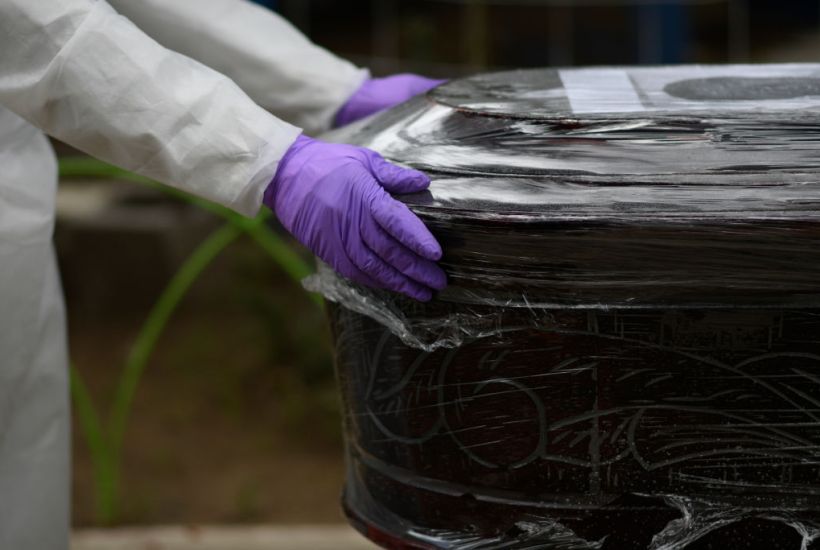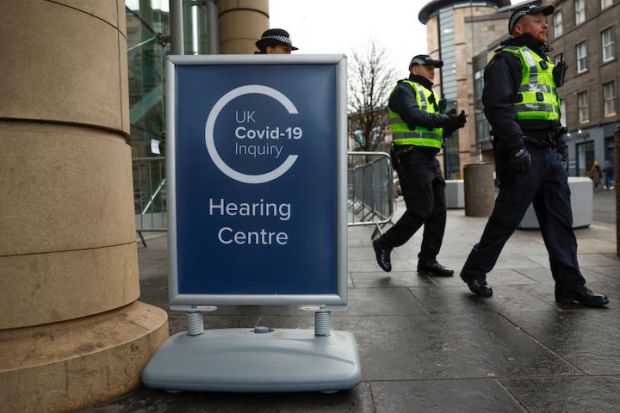It appears nothing and no-one is safe from being accused of racism nowadays: statues, bra names and even Covid-19. Referring to evidence that coronavirus disproportionately affects black, Asian and minority ethnic communities (BAME), as well as men and those who are obese, Tory peer Lord Bethall has said: ‘This disease is racist, fattist and sexist and we need to understand why it is discriminatory in all these areas.’ But does a greater susceptibility to disease due to risk factors like race really make an infectious disease ‘racist’?
American epidemiologist Camara Phyllis Jones argues racism is a factor contributing to disease exposure, as black people are less well protected due to a variety of socio-economic factors, but also because those with pre-existing medical conditions are more likely to develop severe symptoms. In Britain, an official inquiry into the disproportionate impact of Covid-19 on BAME communities has been launched. But there’s another demographic less spoken for, whose chances of survival on contracting Covid-19 is seriously bleak. They do not come with an accompanying acronym, and are simply known as old men.
Official figures on Covid-19 deaths in England and Wales published by the Office of National Statistics (ONS) show some startling disparities between the sexes. A recent report analysing deaths from March-May 2020 showed men had a significantly higher overall death rate compared to women.
But the older they get, the worse the comparative outcomes become. Google-enabled epidemiologists like me, can understand the age-standardised mortality rate (ASMR) to be an average of the age specific mortality rate per 100,000 population. The ONS figures (England) show for 80-84-year olds that this was 1,801.8/100,000 for men vs 1,224.9/100,000 for women, and for the 90+ group – 6,555.6/100,000 and 5,787.7 respectively.
In fact, the disparity begins for the sexes in the over 50s, whereas the ASMR for those under 50 is similar for men and women. Yet despite this older demographic facing some of the starkest mortality outcomes for Covid-19, there seems to be little suggestion that Covid is ‘ageist’, even from those who say the virus is ‘racist’. Perhaps no-one really cares much about what happens to old men, or perhaps it is a group that is all too easy to ignore.
Charities representing the elderly are certainly worried that not enough interest is being taken in how the disease disproportionately affects old people. Age UK has criticised the government for failing to order a review of the evidence concerning the vast overrepresentation of older people among Covid-19 deaths. Caroline Abrahams, the charity’s director, told me: ‘More clarity is required over the extent to which age is just a proxy for frailty and co-morbidity as opposed to being an independent risk factor for becoming seriously ill or dying from the virus. The answer has enormous implications for future policy decisions on lockdowns and shielding, as well as clinical treatment.’
If an inquiry into why BAME people are more affected by Covid-19 is necessary, then it is hard to deny that a probe into the pandemic’s disproportionate impact on the elderly is also long overdue. After all, if Covid-19 really is ‘racist’, ‘fattist’ and ‘sexist’ then it most certainly is ‘ageist’ too.
Got something to add? Join the discussion and comment below.
Get 10 issues for just $10
Subscribe to The Spectator Australia today for the next 10 magazine issues, plus full online access, for just $10.




















Comments
Don't miss out
Join the conversation with other Spectator Australia readers. Subscribe to leave a comment.
SUBSCRIBEAlready a subscriber? Log in